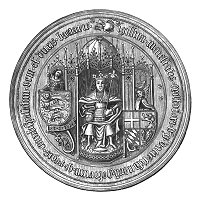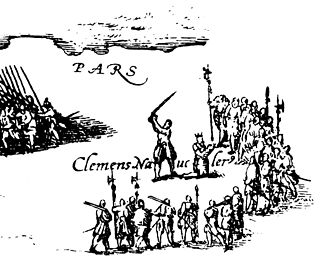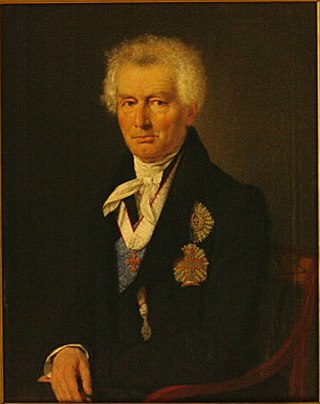Christopher of Bavaria
Last updated| Christopher | |
|---|---|
 | |
| King of Denmark | |
| Reign | 9 April 1440 – 5 January 1448 |
| Coronation | 1 January 1443 Ribe Cathedral |
| Predecessor | Eric VII |
| Successor | Christian I |
| King of Sweden | |
| Reign | 1441 – 5 January 1448 |
| Coronation | 13 September 1441 in Uppsala |
| Predecessor | Eric XIII |
| Successor | Charles VIII |
| King of Norway | |
| Reign | June 1442 – 5 January 1448 |
| Coronation | 2 July 1442 in Oslo |
| Predecessor | Eric III |
| Successor | Charles I |
| Born | 26 February 1416 Neumarkt in der Oberpfalz |
| Died | 5/6 January 1448 (aged 31) Helsingborg |
| Burial | Roskilde Cathedral, Roskilde |
| Spouse | Dorothea of Brandenburg |
| House | Palatinate-Neumarkt |
| Father | John, Count Palatine of Neumarkt |
| Mother | Catherine of Pomerania |
| Religion | Roman Catholicism |
Christopher (26 February 1416 – 5/6 January 1448), known as Christopher of Bavaria (German : Christoph von Pfalz-Neumarkt; Danish and Norwegian: Christoffer af/av Bayern; Swedish Kristofer av Bayern), was King of Denmark (1440–48, as Christopher III), Sweden (1441–48) and Norway (1442–48) during the era of the Kalmar Union. [1]
Contents
Biography
Coming to power
He was the son of John, Count Palatine of Neumarkt (1383–1443) and Catherine of Pomerania (c. 1390–1426). Catherine was the daughter of Wartislaw VII, Duke of Pomerania in Pomerania-Stolp, and sister of the Scandinavian king, Eric of Pomerania. Count Palatine John was a son of King Rupert of Germany (1352–1410). Christopher was probably born at Neumarkt in der Oberpfalz in Upper Palatinate, in Bavaria, Germany. In 1445, Christopher married Dorothea of Brandenburg (1430 – 25 November 1495) in Copenhagen. [2] [3]
Eric of Pomerania was deposed as king of Denmark and Sweden in 1439. Eric's nephew, Christopher, who was rather unfamiliar with Scandinavian conditions, was elected by the Danish State Council as the successor to his uncle, first as regent from 1439, and then proclaimed King of Denmark at the Viborg Assembly (Danish landsting) on 9 April 1440. He was meant to be a puppet, as evidenced by the saying: "Had the Council demanded the stars of heaven from him, he would have ordered it." [4] However he succeeded in maintaining some personal control. As a whole his rule, according to the politics of the nobility and his succession, might be called the start of the long period of balance between royal power and nobility which lasted until 1660. He was later elected king of Sweden in 1441, and Norway in June 1442. [5]
Peasant rebellions
At the start of his reign, he put down peasant rebellions in Funen and Jutland. Once the rebellion on Funen was suppressed, he turned his attention the uprising in Jutland. North Jutland, especially Vendsyssel, was so restive that a peasant army of 25,000 led by Henrik Tagesen Reventlow (executed 1441) posed a serious threat to Christopher's continued reign. Before the king could act, Jutland's noble families raised their own army and marched west of Aalborg to meet Reventlow's forces. [6]
The peasants had created a gigantic wagon fortress three layers deep to protect themselves from the mounted knights they knew would come against them. They also placed tree branches across the bog in front of the camp and then cast earth on top to make it look like solid ground. The overconfident army of nobles led by Eske Jensen Brock appeared at St Jorgen's Hill (St. Jørgensbjerg) on 3 May 1441. The knights charged the camp, and were quickly mired down in the bog. The peasants moved in for the kill. Brock was killed in the Battle of St Jorgen's Hill (Slaget ved Skt. Jørgensbjerg) and dismembered and the pieces sent to the towns in the area as a warning. The peasants then raided Aalborghus (the area's most important manor) forcing the noble Niels Guldenstierne to flee. [4] [7] [8] [9]
The treatment of the captives after the battle strengthened Christopher's determination to put down the peasants. With his own army Christopher rode north to the rebel camp at Husby Hole near St Jorgen's Hill in northern Jutland. Because the rebels outnumbered his troops, Christopher sent word that anyone who left the camp and went home would not be punished for rebellion. The men from the island of Mors and Thisted left, for which they were called cowards and traitors ever after. Christopher ordered the attack on the rebel camp on 8 June 1441 and despite fighting ferociously the rebels could not overcome the heavily armed knights. Thousands of rebels were killed, those who survived were fined heavily. The more severe consequence was that rebels lost their free status and became serfs on the farms where they worked. [4] The king made it a capital crime for peasants to carry weapons longer than a short knife. The subjugation of Denmark's once free peasants was complete. [10]
Coronation, relations with Swedes
This section needs additional citations for verification .(March 2019) |

In May 1442 Christopher traveled to Lödöse to meet with the nobles from all three kingdoms. He was elected King of Norway there and then went to Oslo where he was crowned on 2 July 1442. The next year he was proclaimed King of Denmark at the Urnehoved Assembly near Ribe. When his residence at Roskilde burned down, Christopher moved to Copenhagen and made it the capital of Denmark. [11]
The Swedish nobles were not happy to relinquish any power and thus didn't like him, claiming he was too German for them and that he allowed his uncle (ex-King Eric) to plunder shipping from his castle on Gotland without any attempt to stop him. They blamed a series of bad harvests on him. People were so hungry they mixed ground tree bark with the little flour they could find. Christopher was contemptuously nicknamed the "Bark King" in Sweden. On the other hand, he tried to support the cities and their merchants as far as the limits of nobility and Hanseatic cities allowed. During his reign Copenhagen was made permanently the capital of Denmark (municipal charter of 1443).
He carried on an ineffective policy of war and negotiations against Eric in Gotland which did little to help the dissatisfaction within both Sweden and the Hanseatic League. The Kalmar Union Treaty was changed so that the aristocracy had most of the policy-making powers, and the king lost many of the powers monarchs had acquired since Viking times. [12] The results of this policy of balance were still not reached when he suddenly died as the last descendant of Valdemar IV of Denmark.
Death
In 1448, Christopher died suddenly at Helsingborg at age 31. King Christopher was buried in Roskilde Cathedral. His widow, Queen Dorothea, married the new king, Christian I. [13]
Full title
Christopher's full title was: By the Grace of God, King of Denmark, Sweden and Norway, the Wends and the Goths, Count Palatine of the Rhine, Duke of Bavaria .
Related Research Articles

Christian III reigned as King of Denmark from 1534 and King of Norway from 1537 until his death in 1559. During his reign, Christian formed close ties between the church and the crown. He established Lutheranism as the state religion within his realms as part of the Protestant Reformation, and was the first King of Denmark-Norway.

Eric, often known as Eric of Pomerania, was a Scandinavian monarch who ruled over the Kalmar Union from 1396 until 1439. He was initially co-ruler with his great-aunt Margaret I until her death in 1412. Eric is known as Eric III as King of Norway (1389–1442), Eric VII as King of Denmark (1396–1439) and has been called Eric XIII as King of Sweden. Eric was ultimately deposed from all three kingdoms of the union, but in 1449 he inherited one of the partitions of the Duchy of Pomerania and ruled it as duke until his death in 1459. Eric of Pomerania was a pejorative intended to point out that he did not belong in Scandinavia.

Christian I was a German noble and Scandinavian monarch under the Kalmar Union. He was king of Denmark (1448–1481), Norway (1450–1481) and Sweden (1457–1464). From 1460 to 1481, he was also duke of Schleswig and count of Holstein. He was the first king of the House of Oldenburg.

Frederick I was King of Denmark and Norway. He was the last Roman Catholic monarch to reign over Denmark and Norway, when subsequent monarchs embraced Lutheranism after the Protestant Reformation. As king of Norway, Frederick is most remarkable in never having visited the country and was never crowned as such. Therefore, he was styled King of Denmark, the Vends and the Goths, elected King of Norway. Frederick's reign began the enduring tradition of calling kings of Denmark alternatively by the names Christian and Frederick, which has continued up to the reign of the current monarch, Margrethe II.

Valdemar I Knudsen, also known as Valdemar the Great, was King of Denmark from 1154 until his death in 1182. The reign of King Valdemar I saw the rise of Denmark, which reached its medieval zenith under his son King Valdemar II.

Charles VIII, contemporaneously known as Charles II and called Charles I in Norwegian context, was king of Sweden and king of Norway (1449–1450).

Valdemar IV Atterdag, or Waldemar was King of Denmark from 1340 to 1375. He is mostly known for his reunion of Denmark after the bankruptcy and mortgaging of the country to finance wars under previous rulers.

Eric VI Menved was King of Denmark (1286–1319). A son of King Eric V and Agnes of Brandenburg, he became king in 1286 at age 12, when his father was murdered on 22 November by unknown assailants. On account of his age, his mother ruled for him until 1294.

Christopher II was King of Denmark from 1320 to 1326 and again from 1329 until his death. He was a younger son of Eric V. His name is connected with national disaster, as his rule ended in an almost total dissolution of the Danish state.

The Count's Feud, also called the Count's War, was a war of succession that raged in Denmark in 1534–36 and brought about the Reformation in Denmark. In the international context, it was part of the European wars of religion. The Count's Feud takes its name from the Protestant Count Christopher of Oldenburg, who supported the Catholic King Christian II, deposed in 1523, over the election of Christian III, a staunch Protestant who had already implemented Lutheranism as the state religion in Schleswig and Holstein in 1528.

The coat of arms of Denmark has a lesser and a greater version.

Klemen Andersen "Skipper Clement" was a Danish merchant, captain, privateer and leader of the peasant rebellion that was part of the civil war known as the Count's Feud.

Christian Ditlev Frederik, Count of Reventlow was a Danish statesman and reformer, the son of Privy Councillor Christian Ditlev Reventlow (1710–1775) by his first wife, baroness Johanne Sophie Frederikke von Bothmer. His influence on the life of the Danish people and, particularly, the conditions of the peasantry, made him very popular. He was the brother of Johan Ludvig Reventlow, who in the late 1700s served as his colleague; salonist Louise Stolberg, who was his intellectual partner and opponent through their extensive mail correspondence; and Commodore Conrad Georg Reventlow.

Euphemia of Pomerania was Queen of Denmark as the spouse of King Christopher II. She was the daughter of Bogislaw IV, Duke of Pomerania, and his second spouse, Margarete of Rügen.
Henrik Tagesen Reventlow, from Funen, was supporter